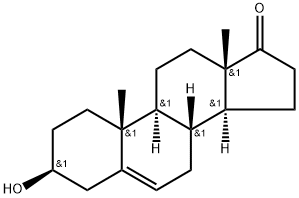Reteplase
- CAS NO.:133652-38-7
- Molecular Weight: 0
- Update Date: 2024-10-28 23:16:16
What is Reteplase?
Description
Reteplase was launched in Germany and the US for acute myocardial infarction. Retevase is a single chain recombinant form of tissue plasminogen activator (t-PA) with all except the kringle-2 and protease domains deleted. When expressed in E. coli the inactive form is produced and stored in inclusion bodies. After purification and an in vitro refolding process the active form is obtained. The expression in E. coli gives rise to a non-glycosylated protein. This and the deletion of several domains allows reteplase to have a longer half-life and a slower clearance. Despite the deletions and refolding the catalytic center remains intact. The kringle-2 domain allows binding to lysine in fibrin which makes it effective for the rapid and complete lysis of coronary thrombi. While it does not have a high affinity for binding to fibrin, its activity is stimulated by it and has the same level of in vivo fibrin selectivity as human t-PA. It has a low affinity for endothelial cells and can be administered as a double bolus injection. Netaplase, a similar recombinant form of t- PA, was launched by MitsuiIMochida in Japan.
Originator
Boehringer Mannheim (Germany)
The Uses of Reteplase
Myocardial infarction therapy; plasminogen activator.
brand name
Retavase
General Description
Reteplase (Retavase) is a deletion mutant variant of tPAthat is produced in recombinant E. coli. The deletions arein domains responsible for half-life, fibrin affinity, andthrombolytic potency. It consists of the kringle-2 domain and protease domain of tPA but lacks the kringle-1 domainand the growth factor domain. It is considered a thirdgenerationthrombolytic agent and has a mechanism of actionsimilar to that of alteplase. Reteplase acts directly bycatalyzing the cleavage of plasminogen and initiatingthrombolysis. It has high thrombolytic potency.
Mechanism of action
Reteplase is a recombinant deletion mutant of tPA lacking the finger, epidermal growth factor, kringle 1 domain, and carbohydrate side chain. As a highly fibrin-specific thrombolytic agent, reteplase is missing the first 172 amino acids that are present in alteplase and has 355 amino acids with a molecular weight of 39 kDa. Because of the removal of the finger kringle 1 domain, reteplase binding to fibrin is reduced from that of alteplase, and reteplase has reduced fibrin selectivity. In addition, the structural modification reduces hepatic elimination, leading to a longer half-life (reteplase, 14–18 minutes; alteplase, 3–4 minutes).
Clinical Use
Administered as a double bolus of 10 U every 30 minutes, reteplase is approved for use in acute myocardial infarction.
Drug interactions
Potentially hazardous interactions with other drugs
Antiplatelets, heparin, vitamin K antagonists:
increased risk of bleeding.
Metabolism
Cleared primarily by liver and kidneys.
Safety information for Reteplase
New Products
(S)-3-Aminobutanenitrile hydrochloride 4-Methylphenylacetic acid N-Boc-D-alaninol N-BOC-D/L-ALANINOL Tert-butyl bis(2-chloroethyl)carbamate 3-Morpholino-1-(4-nitrophenyl)-5,6-dihydropyridin- 2(1H)-one Furan-2,5-Dicarboxylic Acid Tropic acid 1-Bromo-3,5-Di-Tert-Butylbenzene S-2-CHLORO PROPIONIC ACID ETHYL ISOCYANOACETATE 2-Bromo-1,3-Bis(Dimethylamino)Trimethinium Hexafluorophosphate 4-IODO BENZOIC ACID 3-NITRO-2-METHYL ANILINE 1-(2,4-DICHLOROPHENYL) ETHANAMINE (2-Hydroxyphenyl)acetonitrile 4-Bromopyrazole 2-(Cyanocyclohexyl)acetic acid 4-methoxy-3,5-dinitropyridine 1-(4-(aminomethyl)benzyl)urea hydrochloride 2-aminopropyl benzoate hydrochloride diethyl 2-(2-((tertbutoxycarbonyl)amino) ethyl)malonate tert-butyl 4- (ureidomethyl)benzylcarbamate Ethyl-2-chloro((4-methoxyphenyl)hydrazono)acetateRelated products of tetrahydrofuran





![Anistreplasa [INN-Spanish]](https://img.chemicalbook.in/)


You may like
-
 2033-24-1 98%View Details
2033-24-1 98%View Details
2033-24-1 -
 42831-50-5 5-METHYLISOXAZOLE-4-CARBOXYLIC ACID 98%View Details
42831-50-5 5-METHYLISOXAZOLE-4-CARBOXYLIC ACID 98%View Details
42831-50-5 -
 1975-50-4 98%View Details
1975-50-4 98%View Details
1975-50-4 -
 2-HYDROXY BENZYL ALCOHOL 98%View Details
2-HYDROXY BENZYL ALCOHOL 98%View Details
90-01-7 -
 2-Chloro-1,3-Bis(Dimethylamino)Trimethinium Hexafluorophosphate 221615-75-4 98%View Details
2-Chloro-1,3-Bis(Dimethylamino)Trimethinium Hexafluorophosphate 221615-75-4 98%View Details
221615-75-4 -
 61397-56-6 CIS BROMO BENZOATE 98%View Details
61397-56-6 CIS BROMO BENZOATE 98%View Details
61397-56-6 -
 14714-50-2 (2-Hydroxyphenyl)acetonitrile 98+View Details
14714-50-2 (2-Hydroxyphenyl)acetonitrile 98+View Details
14714-50-2 -
 118753-70-1 98+View Details
118753-70-1 98+View Details
118753-70-1